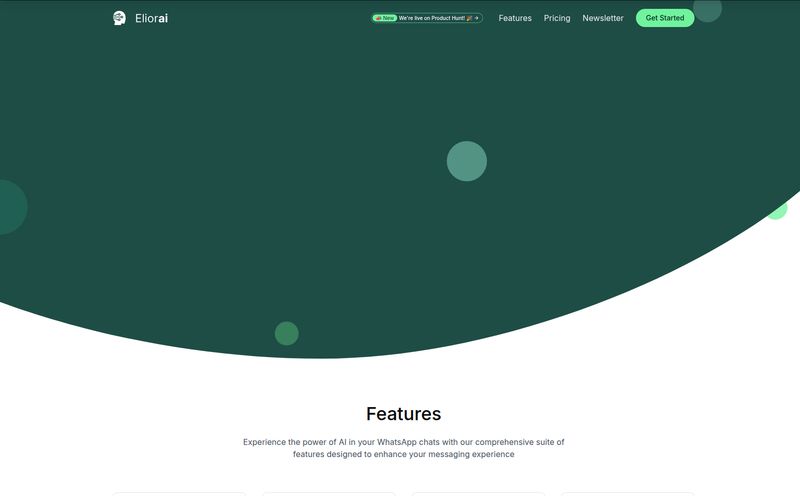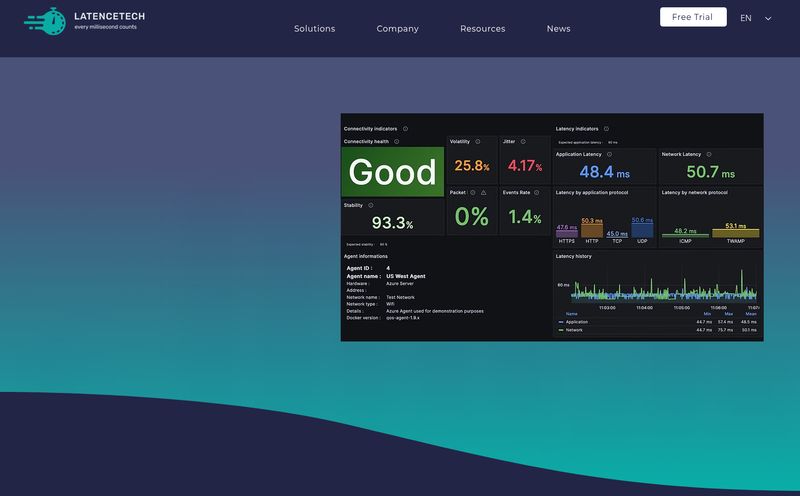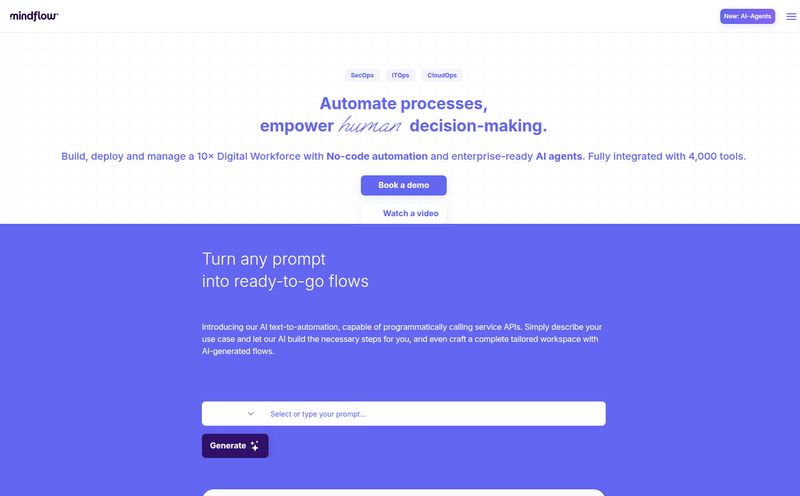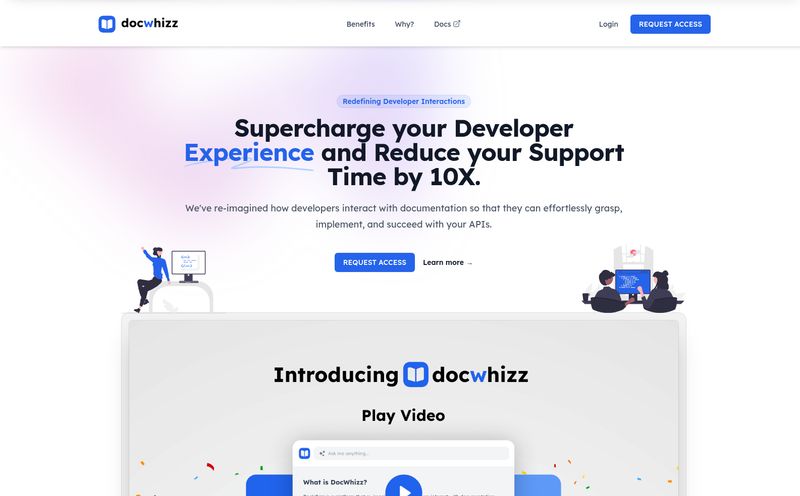I’ve spent more hours than I care to admit scrolling through sound libraries. You know the drill. You need a very specific sound—not just a whoosh, but a fast, airy whoosh with a subtle bass drop at the end. You spend an hour listening to 500 nearly-identical whooshes, your soul slowly chipping away, until you finally settle for one that’s just… okay. It's a universal pain for creators, from podcasters to game devs to music producers.
So when Stability AI dropped Stable Audio Open, my ears perked up. Another AI tool, sure. But the keywords here are “Open” and, supposedly, “Free.” Could this be it? The magic wand that turns our text-based sound ideas into reality without a hefty subscription fee? I had to get my hands dirty and find out.
And let me tell you, it's a fascinating beast. But it might not be for everyone.
So, What’s the Big Deal with Stable Audio Open?
In a nutshell, Stable Audio Open is an open-source model that generates audio from text prompts. Think of it like Midjourney, but for your ears. It’s specifically trained to create short audio clips—we’re talking drum beats, instrument riffs, foley sounds (like footsteps or a door creaking), and all sorts of sound effects. The maximum length you can generate is 47 seconds. So, you're not going to be creating your next full-length EDM banger with it. Not directly, anyway.
Instead, think of it as a generative audio sketchpad. It’s designed to give you the raw ingredients, the perfect little audio building blocks for a larger project. It’s built on a variational autoencoder (VAE) architecture, which, without getting too nerdy, is fantastic for this kind of creative generation and allows you to fine-tune the model on your own audio data. That last part is a power-user move, but it’s a game-changer for creating a truly unique sound palette.

Visit Stable Audio Open
The model was trained on a mix of audio data from FreeSound and the Free Music Archive, which is a great, ethical approach to sourcing training data in my opinion.
The Real Scoop: My Hot Take on the Good and the Not-So-Good
After spending some time with it, I've got some thoughts. As with any tool, especially an open-source one, it’s a mix of incredible potential and a few… let's call them 'character-building' quirks.
What I Absolutely Love
First off, the cost. It’s free. In a world where every AI service is pushing a subscription, having a powerful model you can download and run yourself is a massive breath of fresh air. The audio quality is also surprisingly high. I've messed with a few text-to-audio models that sound like a robot gargling dial-up noises. This is not that. The sounds are crisp, clear, and genuinely usable.
But the real magic, for me, is the open-source nature. This means you’re not just a user on a platform; you’re the master of the tool. The ability to fine-tune it with your own sound library is incredible. Imagine feeding it all your old synth experiments and then being able to generate new, original riffs in that same style. It's like having an infinitely creative studio assistant who already knows your vibe.
A Few Crucial Caveats to Keep in Mind
Okay, let’s be real. “Free and open-source” often comes with a bit of a learning curve. This isn’t a slick, polished web app. You’ll need to be comfortable with things like Python, PyTorch, and maybe a little bit of command-line action to get it running locally. If that sentence made you break out in a cold sweat, this might be a frustrating experience. It’s built for tinkerers and developers more than the plug-and-play crowd.
And now for the biggest, most important point, and one you absolutely cannot miss: the license. Stable Audio Open is released under the Stability AI Non-Commercial Research Community License. I'm putting that in bold because it’s critical. This means you cannot use the audio you generate for any commercial purposes. No selling the beats, no using the SFX in a monetized YouTube video, and no putting the sounds in a game you plan to sell. This tool, in its current form, is for personal projects, research, and hobbyists. It's a major distinction that separates it from many paid services.
Who Should Be Downloading This Right Now?
Given the technical requirements and the non-commercial license, the ideal user for Stable Audio Open is pretty specific.
- The Hobbyist Music Producer: Want to generate some truly weird percussion loops or atmospheric textures to chop up and sample in your personal projects? This is your playground. It’s an endless source of inspiration without the cost of sample packs.
- The AI Researcher or Student: If you’re studying generative AI, this is a fantastic, hands-on model to experiment with. The ability to fine-tune it is a perfect sandbox for learning.
- The Creative Coder: Anyone building non-commercial creative projects, interactive art, or just exploring the intersection of code and audio will find a ton of value here.
Who isn't it for? If you're a professional looking for assets for a commercial project, you'll need to look elsewhere, like at Stability AI’s paid Stable Audio service, which does come with a commercial license.
Let’s Get Practical: What Can You Actually Make?
This is where the fun begins. The quality of your output is all about the quality of your prompt. You can get really detailed.
I tried a few prompts to see what it could spit out. For example:
"A 120 BPM house music drum loop, four-on-the-floor kick drum, crisp hi-hats, a funky snare on the 2 and 4, with subtle reverb, studio quality"
The result was a genuinely solid, usable drum loop. It had the right feel and the sound quality was there. Then I tried something more atmospheric:
"Foley sound of walking on crunchy autumn leaves in a quiet forest, a gentle wind rustles the trees, distant bird call, recorded with a condenser microphone"
Again, impressive. It captured the texture and the ambience beautifully. It’s this ability to generate specific, nuanced soundscapes that makes the tool so compelling, even as a non-commercial toy.
The Best Part: The Price Tag
I've said it before, but it's worth its own section. The model is free. Zero dollars. The 'cost' is the hardware you need to run it on (a decent computer with a GPU is recommended for speed) and the time you invest in setting it up. For anyone who loves to experiment without financial commitment, it’s a dream come true.
Final Thoughts: A Powerful Tool with a Clear Purpose
So, is Stable Audio Open the answer to all our sound design prayers? Well, yes and no. It’s not a commercial-use workhorse or a one-click solution for beginners. It's a powerful, high-quality, and wonderfully open tool for a specific audience: the curious, the tinkerers, the researchers, and the hobbyists.
It represents a really exciting shift towards democratizing creative AI tools. It puts immense power directly into the hands of creators to experiment and play, without paywalls. As long as you know what you're getting into—a bit of a technical setup and a non-commercial license—it’s one of the most exciting new toys in the audio tech space. The age of endlessly scrolling through generic sound libraries might be coming to an end. Now, if you can describe it, you can probably create it. And that’s pretty damn cool.
Frequently Asked Questions
- What is Stable Audio Open?
- It's a free, open-source AI model from Stability AI that generates short audio clips (up to 47 seconds), like sound effects and music loops, from text descriptions.
- Is Stable Audio Open really free?
- Yes, the model itself is completely free to download and use. However, you'll need your own computer (a decent GPU is helpful) to run it, and you must adhere to its non-commercial license.
- Can I use the audio I generate for commercial projects?
- No. This is the most important thing to know. The model is released under a non-commercial license, meaning any audio you create with it can only be used for personal projects, research, or non-monetized work.
- What do I need to run Stable Audio Open?
- You'll need a computer with Python installed, along with libraries like PyTorch and 🤗 Transformers. Some familiarity with using a command line is highly recommended. It's not a simple desktop application.
- How is this different from Stability AI's main Stable Audio product?
- Stable Audio Open is a free, open-source model for non-commercial use that you run yourself. The main Stable Audio is a paid web-based service that offers more features, longer generation times, and commercial licensing options for professionals.
- Can it generate vocals or complete songs?
- No, its primary focus is on generating shorter instrumental samples, sound effects, foley, and other audio textures. It is not designed for generating coherent vocals or full-length musical compositions.
Reference and Sources
- Stability AI Official Announcement: Stable Audio Open: An Open-Source Model For Audio Generation
- Hugging Face Model Page: stabilityai/stable-audio-open-1.0
- Official License Information: Stability AI Non-Commercial Research Community License
- Paid Commercial Alternative: Stable Audio



